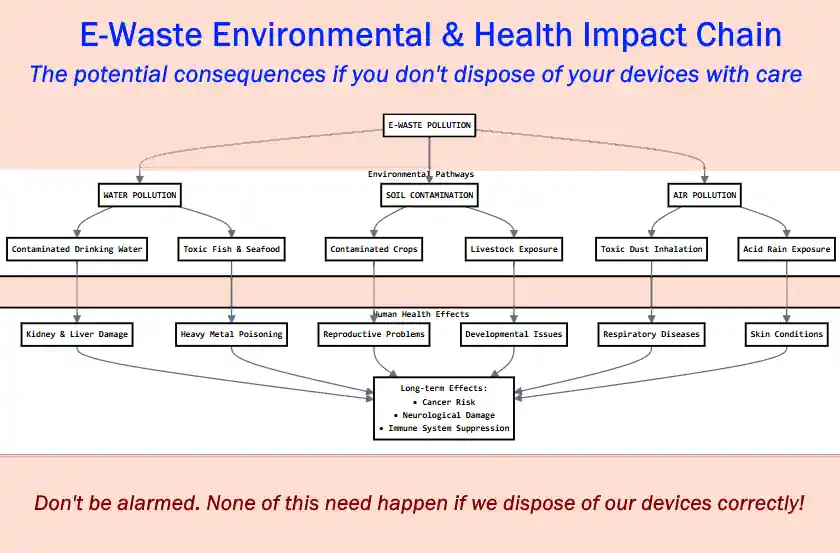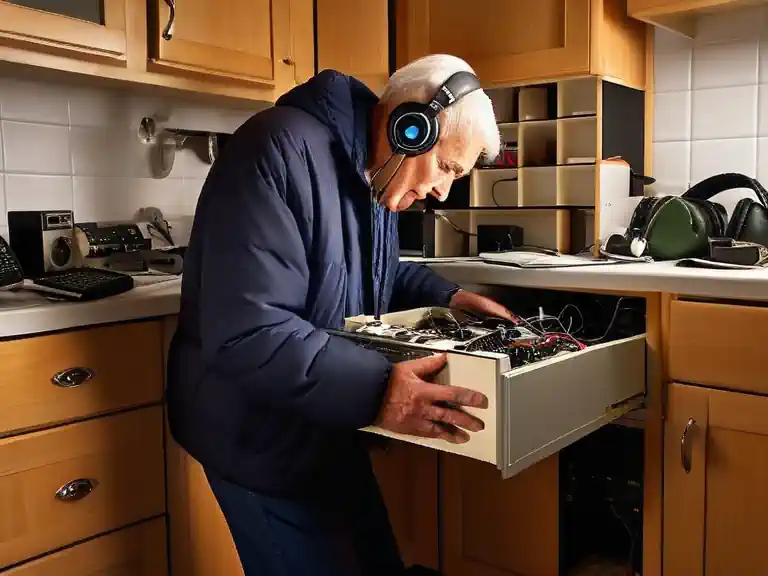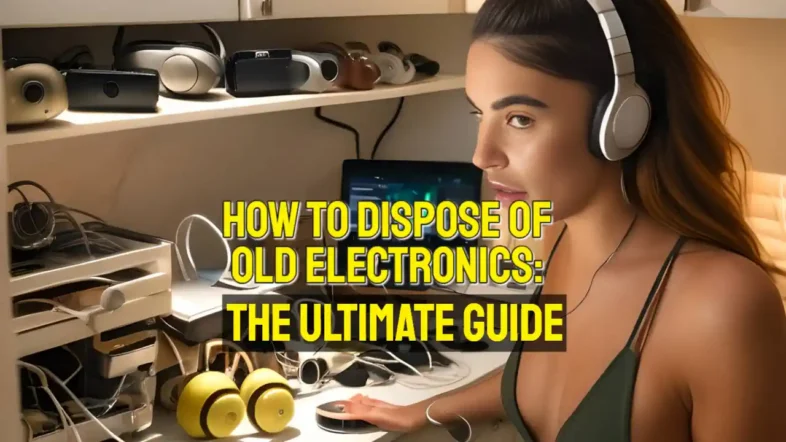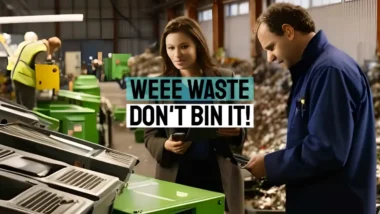Want to know how to dispose of old electronics responsibly? Our comprehensive 2025 guide shows you exactly where and how to recycle your old devices, helping you protect the environment while potentially earning some cash back!
Introduction: Your Old Electronics Matter More Than You Think!
Remember that drawer full of old phones you've been avoiding? Or that ancient laptop gathering dust in your closet? You're not alone!
The average American household has about 25 unused electronic devices, and honestly, most of us are guilty of hoarding outdated gadgets. But here's the shocking truth: every year, we generate enough e-waste globally to fill 100 Empire State Buildings!
The good news? You're already taking the first step toward responsible disposal by reading this guide. Let's turn that guilty drawer of old electronics into an opportunity to help our planet!

In our fast-paced digital world, technology evolves at lightning speed. What’s cutting-edge today might be outdated tomorrow. Whether you're upgrading your smartphone, cleaning out your office, or simply decluttering your home, figuring out how to dispose of old electronics responsibly is crucial.
Not only does proper disposal protect the environment, but it can also offer you some financial benefits.
Welcome to our ultimate guide for 2025 on disposing of old electronics responsibly!
What Happens When You Throw Electronics in the Trash? (Spoiler: Nothing Good!)
The Environmental Impact of Ignoring this Article
I am an environmental engineer and it is not an exaggeration to say that people who don't care how to dispose of old electronics, and leave them lying around in heaps in the backyard, or chuck them out of a car window, put us all at risk. The list below provides some of the serious outcomes that occur:
- Toxic Materials Leaching
- Soil Contamination
- Water Pollution
- Air Pollution
- Ecosystem Damage
- Human Health Issues
- Battery fires
 How to Dispose of Old Electronics: E-waste environmental health impact chain diagram.
How to Dispose of Old Electronics: E-waste environmental health impact chain diagram.
Why Responsible Disposal Matters
Electronic waste, or e-waste, is one of the fastest-growing waste streams globally. Improper disposal can lead to severe environmental and health issues:
- Environmental Impact: E-waste contains hazardous materials like lead, mercury, and cadmium. When not disposed of correctly, these substances can leach into the soil and waterways, harming ecosystems.
- Health Risks: Exposure to harmful chemicals from e-waste can cause serious health problems, including respiratory issues, skin conditions, and even neurological damage.
- Resource Conservation: Many electronics contain valuable materials like gold, silver, and rare earth metals. Recycling these materials reduces the need for mining, conserving natural resources and saving energy.
By taking the time to dispose of your old electronics responsibly, you contribute to a healthier planet and a safer community.
Let's get real about what happens when electronics end up in landfills, or tipped on land:
1. Toxic Materials Release:
- One old TV can contaminate 50,000 litres of groundwater
- A single cell phone battery can pollute 600,000 litres of water
- Mercury from electronics can enter the food chain through soil and water
Yes. It's a nightmare! But, you can learn how to dispose of old electonic devices here now!
2. Resource Waste
Every million cell phones recycled can recover:
35,000 pounds of copper
772 pounds of silver
75 pounds of gold
33 pounds of palladium
That's a lot!

Your Complete Electronics Disposal Checklist (Save This!)
Is Your Device Still Functional?
- Yes: If your device is still in working condition, consider selling or donating it. Many organizations and individuals can benefit from a functioning electronic device.
- No: If the device is broken or no longer works, recycling is your best option.
Check for Warranty or Trade-In Programs
Many manufacturers and retailers offer trade-in programs that allow you to exchange your old electronics for discounts or cash. Check the following:
- Manufacturer Programs: Companies like Apple, Samsung, and Dell have dedicated trade-in services.
- Retailers: Stores such as Best Buy and Amazon offer trade-in options for a variety of electronics.
- Local Stores: Some local electronics shops also provide trade-in or recycling services.
Step 1: Prepare Your Device
Back up your data
Sign out of all accounts
Perform a factory reset
Remove batteries (they need special recycling)
Gather all accessories and cables
This is Your Complete Electronics Disposal Checklist (Save This!)
Step 2: Choose Your Disposal Method (EU and UK)
One of the disposal methods in the table below should apply, and by selecting your disposal method using the table below, you will have completed the first hurdle in understanding how to dispose of old electronics (WEEE):
| Disposal Method | Convenience | Potential Reward | Environmental Impact | Best For |
|---|---|---|---|---|
| Manufacturer Take-Back | High | Store Credit | Excellent | New Devices (< 5 years old) |
| Electronics Retailers | High | None | Excellent | Any Electronics |
| Local Recycling Center (E-waste Recycling Centres) | Medium | None | Very Good | All Types of Electronics |
| Trade-In Programs | High | Cash/Credit | Good | Phones, Tablets, Laptops |
| Donation Centers (Charity Shops etc.) | Medium | Tax Deduction | Excellent | Working Electronics |
Popular Electronics Recycling Programs (Updated for 2025)
Manufacturer Programs
The first step in considering how to dispose of old electronics is always to check that there is no manufacturer program through which your fairly recent device may hold a sell-back value.
This will always be worth finding out about as you may be paid for returning your old device.
Failing that check for return schemes, again from the manufacturer.
Here are some of the schemes:
- Apple Trade In: Accepts all Apple devices plus Android phones
- Samsung Recycling Direct: Free recycling for all Samsung products
- Dell Reconnect: Partners with Goodwill for free recycling
- Best Buy Electronics Recycling: Accepts most electronics, some fees may apply
- Amazon Trade-In: Gift cards for eligible devices
E-Waste Recycling Centers
Local e-waste recycling centers are equipped to handle a wide range of electronic devices responsibly. This is the most common fall-back of all the ways when thinking of how to dispose of old electronics. Benefits include:
- Proper Handling: Certified facilities ensure that hazardous materials are safely processed.
- Resource Recovery: Valuable materials are extracted and reused, reducing environmental impact.
Manufacturer Recycling Programs
As mentioned earlier, many manufacturers offer recycling services. These programs often provide:
- Convenience: Some manufacturers offer free shipping labels for sending in your old devices.
- Incentives: Earn discounts or rewards when you participate in their recycling programs.
Community Collection Events
Keep an eye out for local e-waste collection events, which are often hosted by municipalities or non-profits. These events offer:
- Free Recycling: No cost to drop off your old electronics.
- Educational Resources: Learn more about responsible disposal and recycling practices.
Donating Your Old Electronics
If your device is still functional, donating it is a fantastic way to extend its life and benefit others.
Choosing the Right Organization
Several reputable organizations accept electronic donations, including:
- Non-Profits: Groups like Goodwill and the Salvation Army commonly accept electronics.
- Schools and Libraries: Educational institutions often welcome donations to support learning and development.
- Charities: Specific charities focused on technology access may have more targeted needs.
Preparing Your Device for Donation
- Clean the Device: Physically clean your electronics to make them presentable.
- Include Accessories: Provide chargers, cables, or any other relevant accessories if possible.
- Provide Original Packaging: If you have the original box and manuals, include them to enhance the donation’s value.
Having prepared your device for donation or recycling no article on how to dispose of old electronics would be complete without mentioning the following options:
Manufacturer Recycling Programs
As mentioned earlier, many manufacturers offer recycling services. These programs often provide:
- Convenience: Some manufacturers offer free shipping labels for sending in your old devices.
- Incentives: Earn discounts or rewards when you participate in their recycling programs.
Community Collection Events
Keep an eye out for local e-waste collection events, which are often hosted by municipalities or non-profits. These events offer:
- Free Recycling: No cost to drop off your old electronics.
- Educational Resources: Learn more about responsible disposal and recycling practices.
Special Handling Instructions by Device Type

Smartphones
- Remove SIM card and SD card before processing
- Perform factory reset to remove all personal data
- Remove protective case and accessories
Laptops
- Remove battery if possible
- Securely erase hard drive using approved methods
- Remove all peripherals and external components
TVs
- Handle with care to prevent screen damage
- Keep all original parts and components together
- Seek professional assistance for demounting large or mounted units. Take care not to injure yourself. Older models can be surprisingly heavy!
Batteries
- Never dispose of batteries in regular trash
- Store in a dry location away from moisture
- Take to designated battery recycling locations

Other Devices
- Smart TVs and Game Consoles: While these devices typically don’t store sensitive personal data, it’s still a good practice to reset them to default settings.
- Wearables and Smart Home Devices: Ensure you remove any linked accounts and perform necessary resets.
Turn Your E-Waste into Cash: Smart Recycling Tips
1. Timing Matters!
The best times to apply this guide on how to dispose of old electronics for maximum value:
- September (before new iPhone launches)
- January (post-holiday upgrades)
- Spring cleaning season
But, best time or not – do it soon! – you may be able to get some cash-back if you are quick!
2. Value Retention Tips
- Keep original packaging
- Maintain good condition
- Save accessories
- Document functionality
- Get professional repairs done
Make It a Habit: Creating Your Electronics Recycling System
- Create a “Tech Exit” Box
- Designate a specific container for outdated electronics
- Add a reminder to check it quarterly
- Keep basic recycling supplies nearby (bags, labels)
- Set Calendar Reminders
- Annual spring cleaning review
- Quarterly device assessment
- Local recycling event dates
The Future of Electronics Recycling
Will WEEE disposal always be like this? No, it can't be because there are not enough resources on this planet to continue as we have been, for very long. However, good things are happening already with repairable and upgradable devices.
Emerging Trends in More Sustainable Electronic Devices
Here are some of the possible future developments:
- Modular devices for easier recycling
- Biodegradable electronics
- Advanced recycling technologies
- Extended producer responsibility (EPR) -Return your goods for recycling and the return of a deposit paid on purchase
- Circular economy initiatives

Conclusion – How to Dispose of Old Electronics: Your Actions Matter!
Every electronic device you recycle makes a difference! By following this guide, you're not just decluttering your space – you're contributing to a healthier planet. Remember, responsible electronics disposal isn't just an option anymore; it's our responsibility to future generations.
Ready to take action? Start with just one device today. Your drawer full of old phones isn't getting any emptier by itself!
Quick Action Steps:
- Choose one old device to recycle this week
- Select a disposal method from our comparison table
- Follow the preparation checklist
- Execute your recycling plan
- Share this guide with friends and family!







